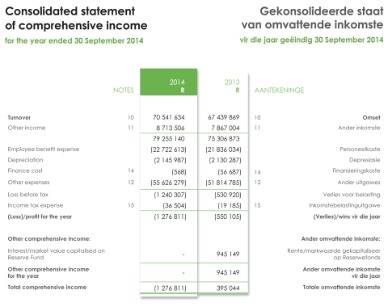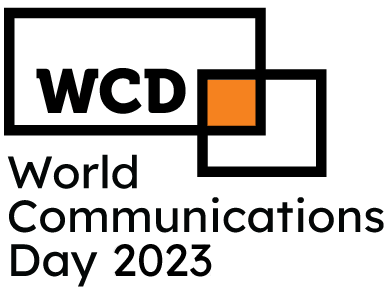
That example might seem outlandish but it’s really not. Believe it or not, you can actually save $5K/year with just a few simple tweaks in your daily life. You earned $11 on $110, so you have $121 at the end of year 2. You earned “interest on interest, which means you are earning a little more each year.
- The longer you leave your money untouched, the more powerful the compounding effect becomes.
- And if I can be quite frank, it’s why broke people are broke and rich people are rich.
- Neither the article or the bank said how much the $6.11 would have grown to today.
- The concept is that when you earn interest in X amount of time, that next time period you’re going to earn interest on the principal AND the interest that you previously earned.
Should you need any help with checking your calculations, please make use of our popular compound interest
calculator and daily compounding calculator. This formula is useful if you want to work backwards and calculate how much your starting balance would need to be in order to achieve a future monetary value. I created the calculator below to show you the formula and resulting accrued investment/loan value (A) for the figures that you enter. If you’re using Excel, Google Sheets or Numbers, you can copy and paste the following into your spreadsheet and adjust your figures for the first four
rows as you see fit.
Not only are you paying it to the bank, but you’re paying it to your employer because now you’re going to have to work even longer to be able to fund your retirement. Fortunately, I had gotten the $12K balance down to about $8K before the interest came into play, and I continued to pay it off aggressively after that, but many people don’t do that. I have coworkers and friends that will go out to eat every single day for lunch. Some days they’ll spend $7, others it’s $20, but on average I would say it’s likely right around $12, especially if you’re sitting down somewhere. Nowadays it’s somewhat hard to go out to eat for under $10, and then you can tack on a 20% tip and end up at $12 pretty quickly. The earning aspect is very, very similar to the example that I just gave you above.
People who understand compounding interest.
So, for individual stockholders, buy and hold works best if you live to be as old as Methuselah. We have a 2-year-old and another baby on the way, and we love Greatest Gift’s discover section. I look forward to learning about the right financial tools to help build their future and set them up for success financially. So, with a 10% interest rate, your money would double in about 7 years. For example, let’s say you have an interest rate of 6%.
Imagine you invested $1,000 in a fund that provided a return of seven per cent per annum (compounded monthly). Now if you are like most people, at first you might jump on the million dollar deal. But if you break out your calculator and double one penny for 30 days you will be amazed that on day 30 your penny would be worth over $5,000,000. And this is where Albert Einstein comes into play. According to Einstein, “Compound interest is the eighth wonder of the world. He who understands it, earns it … he who doesn’t … pays it.” At first this quote might seem like a bit of an exaggeration but the math behind it shows that it is not.
Compound interest may not be Einstein’s eighth wonder, but it is a powerful tool for investors
References continued to proliferate, but QI will stop the presentation here because the citations above provide a reasonable sample. The third friend sharpened his pencil and started to figure on a large piece of paper. Compound interest is the most powerful force in the universe. Thus, taking the compounding effect into account, the real amount of interest paid during a year is higher than only considering the nominal interest. Compounding is often compared to pushing a snowball down a hill.
- Thus, taking the compounding effect into account, the real amount of interest paid during a year is higher than only considering the nominal interest.
- I believe in you, my fellow freedom fighter because I know you can make a difference.
- The only return that matters is your long-term return, and, for most asset classes, your long-term investment return is reasonably predictable.
Usually the interest will accrue annually, but it is important to understand the contract as the accrual may be more often than a year, such as monthly, quarterly or bi-annually. If you are patient, and stick with your investments over time, you will almost always come out ahead. I hope you found our daily compounding calculator and article useful.
Questions about our calculator
That first year you did make $500, or 10% on your $5K investment. But, in Year 2, you’re going to make 10% on your $5,500 invested rather than just the $5K that you initially put in. For the first couple years of my investing journey, I really didn’t fully comprehend what he was meaning when he said this. Let’s assume two different investors that are the exact same age. At that point, you are earning more in interest each year than you initially invested. Let’s use the example above and assume you earn 10% for 10 straight years.

We’re firm believers in the Golden Rule, which is why editorial opinions are ours alone and have not been previously reviewed, approved, or endorsed by included advertisers. The Ascent does not cover all offers on the market. Editorial content from The Ascent is separate from The Motley Fool editorial content and is created by a different analyst team.
Compounding interest can create millionaires from average people.
This means it’ll take 12 years for your investment to double. The Ascent is a Motley Fool service that rates and reviews essential products for your everyday money matters. If you are the participant lending out the money, you receive the interest. If you deposit money in your bank account, it is similar to “lending” money to the bank and therefore you receive interest on the amount you deposit.
Interactive compound interest formula
After 10 years, your original $1,000 would become $2,010. That means your annual interest would be $1,010 – more than your original investment. The longer you leave your money untouched, the more powerful the compounding effect becomes. So if you are telling yourself that you will put aside money for tomorrow “when you can afford to” or “when you make more money” or whatever, you are putting yourself at a huge disadvantage. If you’ve been reading all the way through, you’re already better than 90% of the world.
Nobody has that kind of money to save for their kids. However, if your habits create interest for you, then just sit back and relax. You will one day be rich, you identifying incremental cost in hmo just have to let compounding interest do the work for you. While everybody might know that interest is bad, only a few people decide to do something about it.
I lived on a ranch in California, and I was hard put to find the ladder whereby to climb. I early inquired the rate of interest on invested money, and worried my child’s brain into an understanding of the virtues and excellencies of that remarkable invention of man, compound interest. Albert Einstein once said “Compound interest is the eighth wonder of the world.
